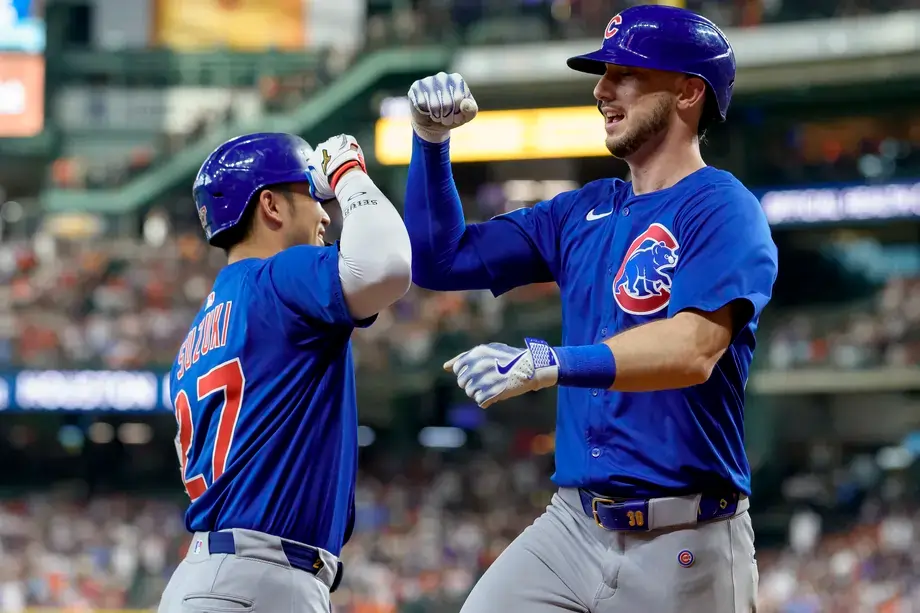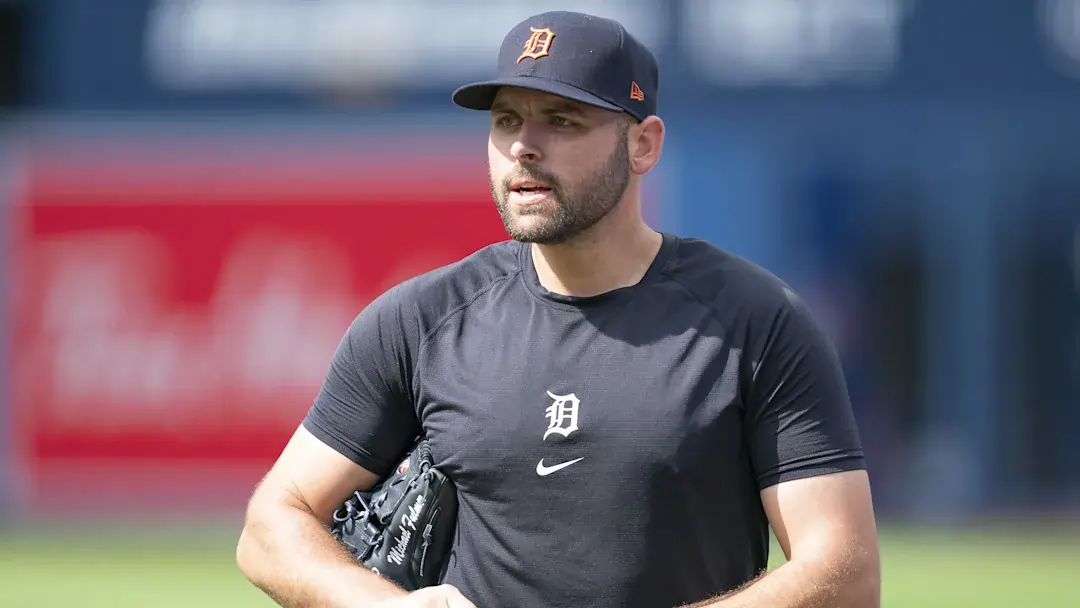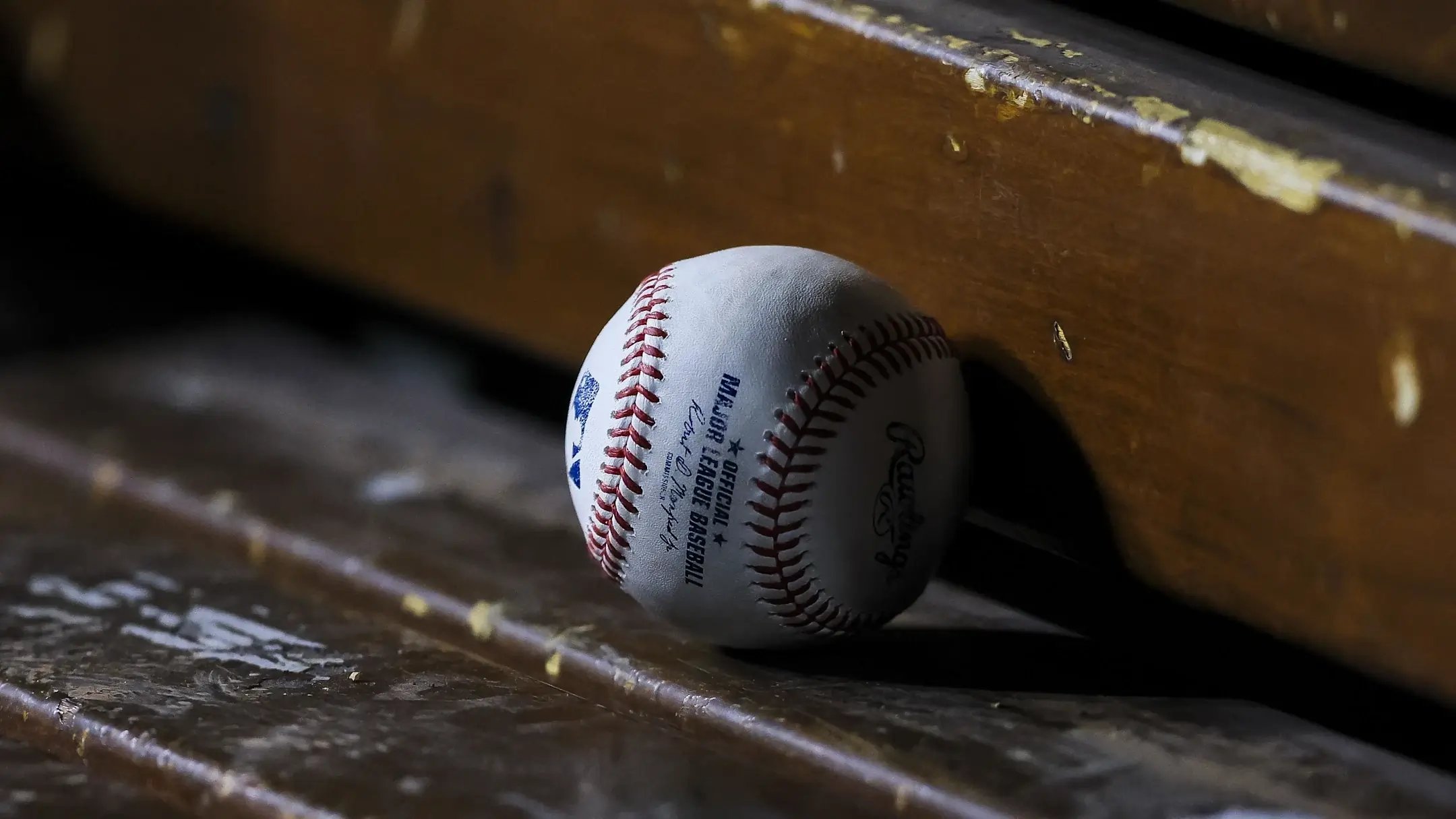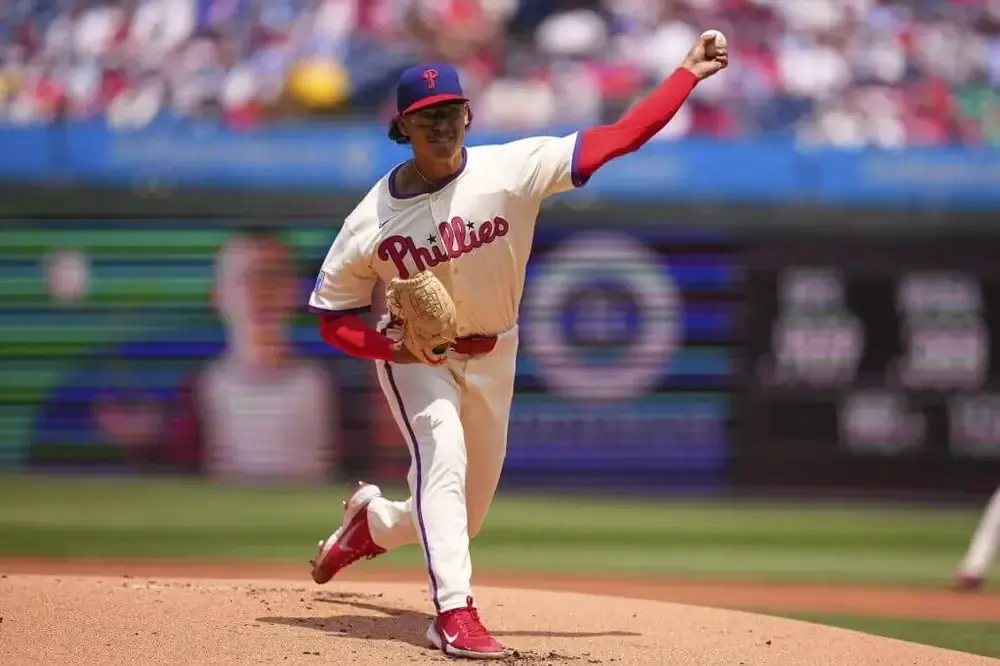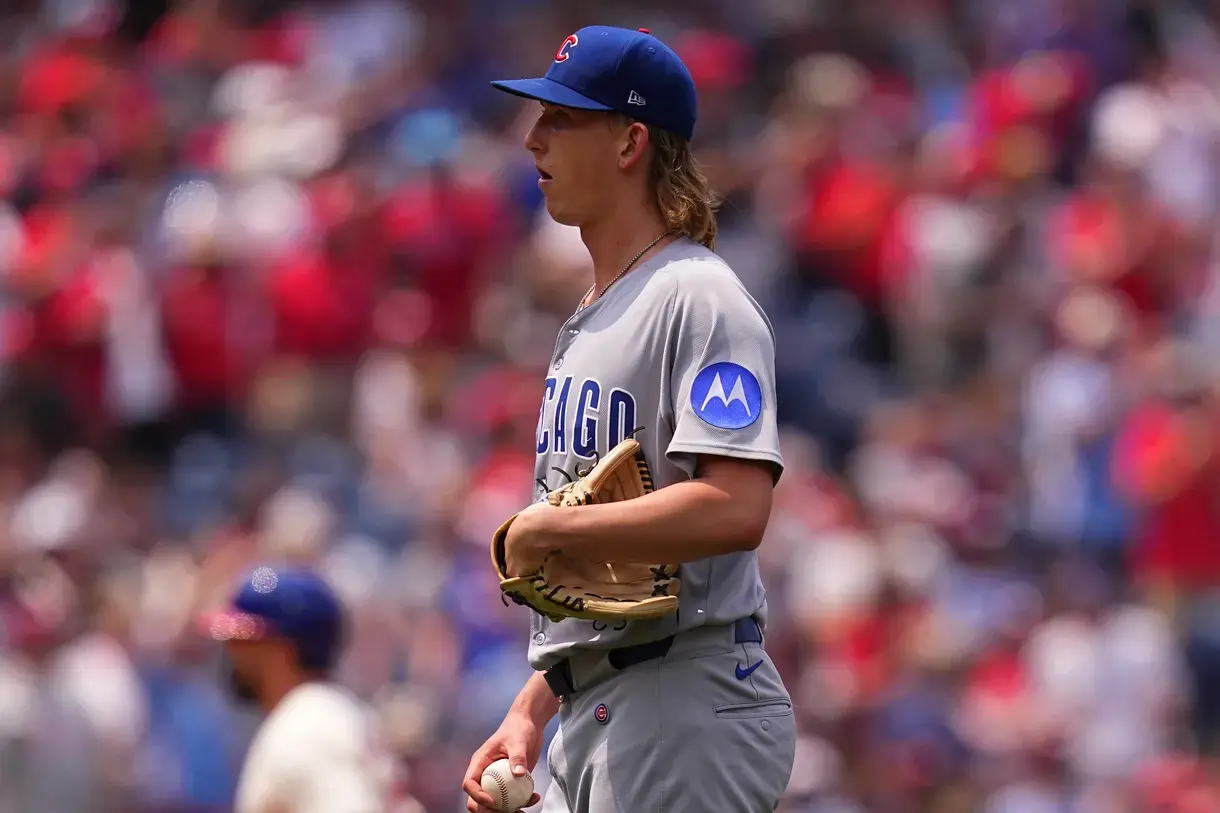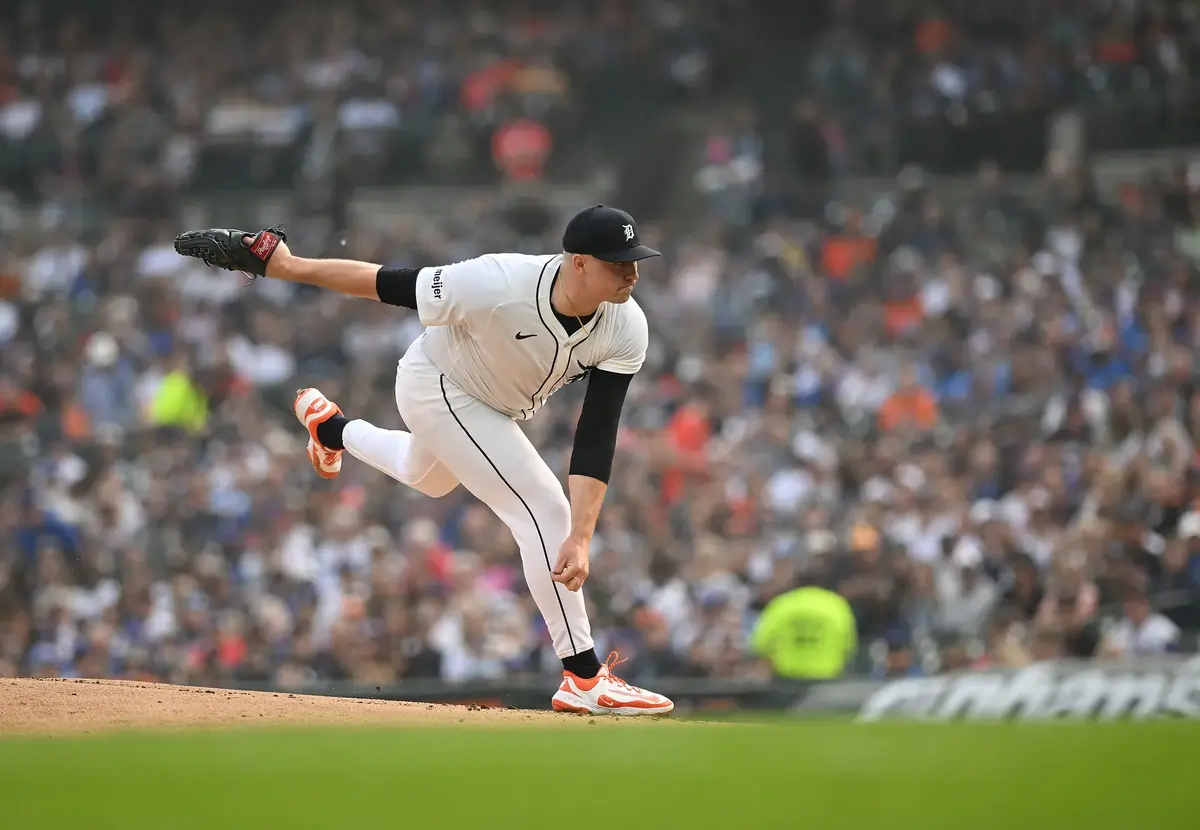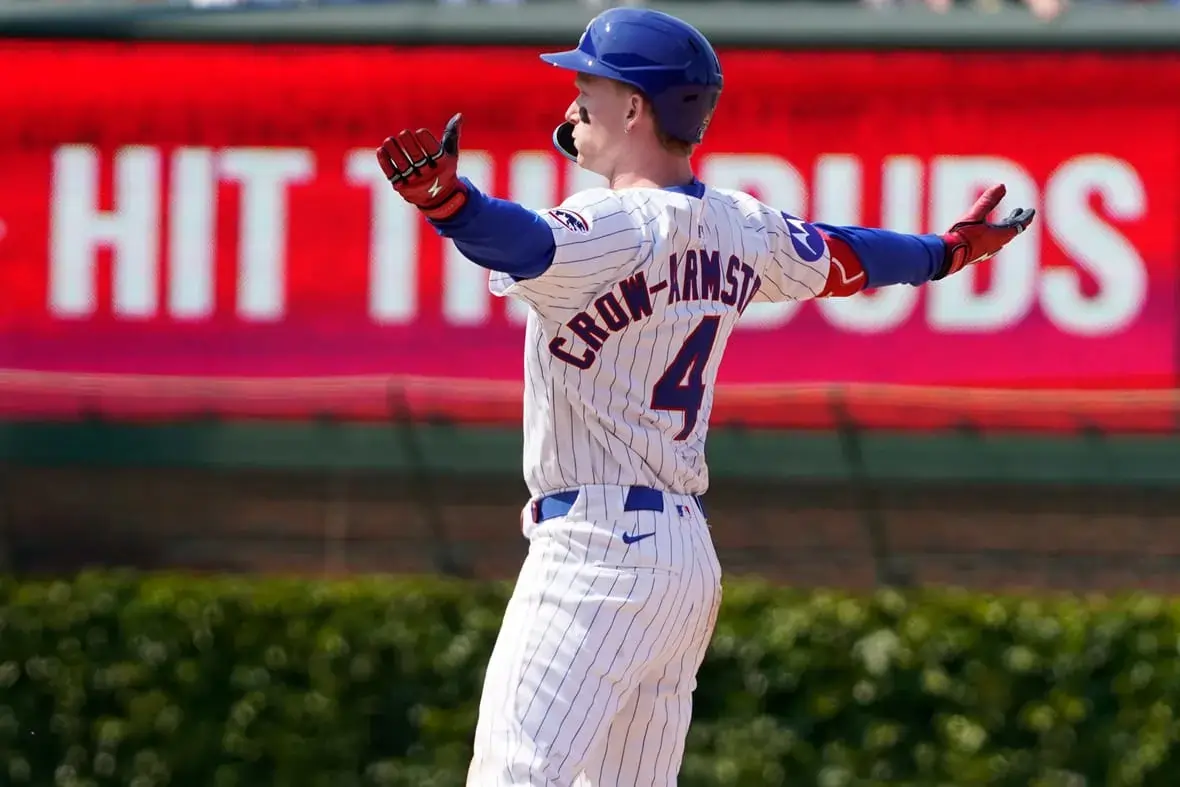The game started off eerily similar to Friday night’s — with the Cubs getting runners on base early but struggling to capitalize.
In the top of the first, Kyle Tucker led off with a single and quickly stole second. Pete Crow-Armstrong walked and swiped second as well, putting pressure on the Astros’ defense. After Swanson drew another walk, bases were loaded for Michael Busch, who forced in a run with a walk of his own.
But just when it looked like the Cubs might take control early, Nico Hoerner grounded out to end the inning — leaving three runners stranded.
Colin Rea kept things steady on the mound, navigating through some early traffic and keeping the score at 1-0 heading into the third.
Then came the moment that made fans nervous — former Cub Cam Smith took Rea deep for the second straight night, flipping the script and giving the Astros a 2-1 lead.
It felt like one of those nights again. The kind where the offense disappears after one run and the game slips away.
But then, everything changed.
Kyle Tucker & Co. Take Over: A Seven-Run Fourth to Remember
With one out in the fourth, Michael Busch stepped up and crushed a solo shot to center field — tying the game at 2-2.
Just six pitches later, Nico Hoerner followed that up with a home run of his own. Back-to-back bombs!
That pair marked the seventh time this season the Cubs have gone back-to-back — already halfway to their franchise record of 12 set in 2004.
And they weren’t done yet.
Matt Shaw walked and moved to second on a single by Reese McGuire. Ian Happ brought him home with a single to make it 4-2.
Then came Kyle Tucker — and he delivered in a big way. He launched a no-doubt homer to left field, making it 7-2 and sending Wrigley Field West into a frenzy.
Seiya Suzuki tripled next and scored on a sac fly by Crow-Armstrong, capping off a massive seven-run inning.
It was the second seven-run inning of the season for the Cubs and came at the perfect time.
Tucker Steals the Show
Kyle Tucker didn’t just have a good game — he had a career night.
He finished with four hits, four runs scored , and a monster home run that sealed the deal in the fourth. Facing his former team and their fans, Tucker showed exactly what he brings to the table.
Later in the sixth, he doubled and eventually scored to extend the lead. Then in the eighth, he singled for his fourth hit of the night, setting the tone for more damage from Seiya Suzuki and Ian Happ.
Suzuki, in particular, put on a show. His two-run homer in the eighth was a no-doubter — and gave him 22 on the year , already matching his previous career high. He’s now pacing toward a potential 40-homer season and leads all of MLB in RBIs with 69.
Solid Pitching and Defense Behind the Offense
Colin Rea wasn’t lights-out, but he was solid — five innings, two runs, five hits, and zero walks. Not flashy, but effective.
His outing was backed by strong relief work from Ryan Brasier and Drew Pomeranz, who each threw clean innings. Porter Hodge allowed a late solo homer, but it was a minor blemish on an otherwise dominant performance.
Tucker also made a highlight-reel catch in the fourth, showing off his elite defense and reminding everyone why he’s one of the best all-around players in baseball.
What This Win Means for the Cubs
With the win, the Cubs improved to 13-12 in June , keeping their hopes alive for a winning month. A Sunday victory would not only secure a series win but also cap off a successful road trip.
Jameson Taillon is set to face Framber Valdez in the finale, with first pitch scheduled for 1:10 p.m. CT.
After a shaky start, the Cubs reminded everyone why they’re dangerous when their offense clicks — especially with Kyle Tucker leading the charge.
From clutch hitting to timely defense, Saturday’s 12-3 win was the kind of performance that can turn around a series, or even a season.
